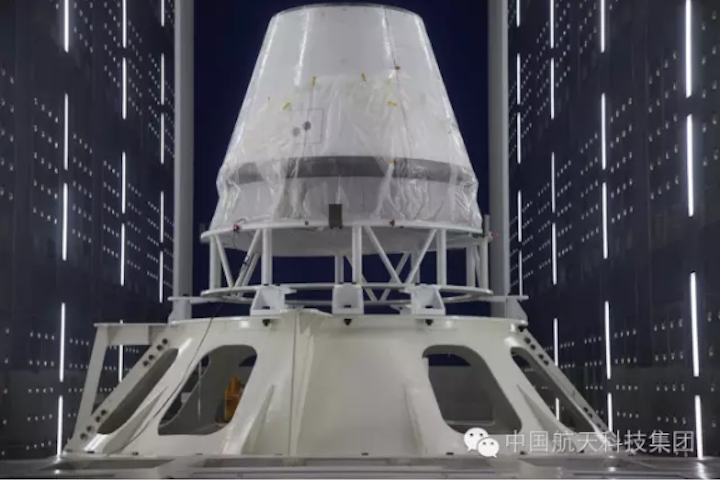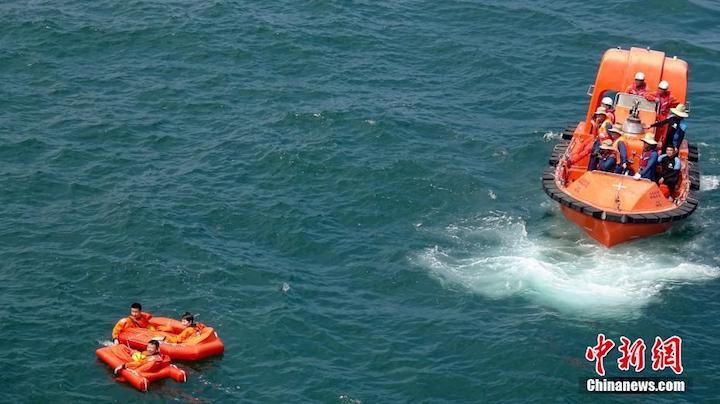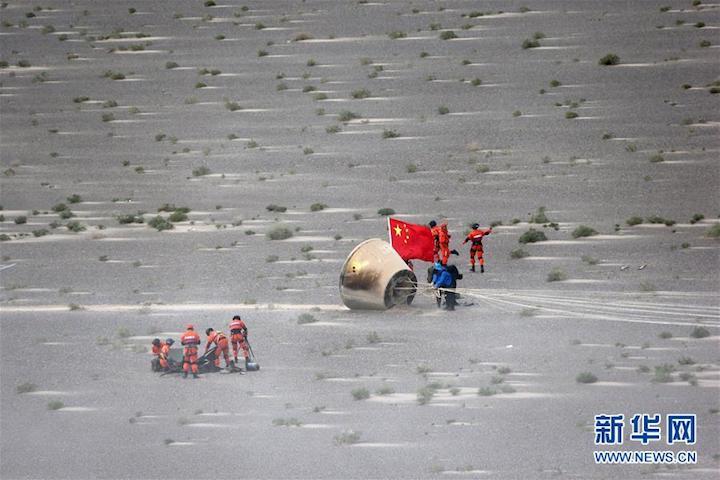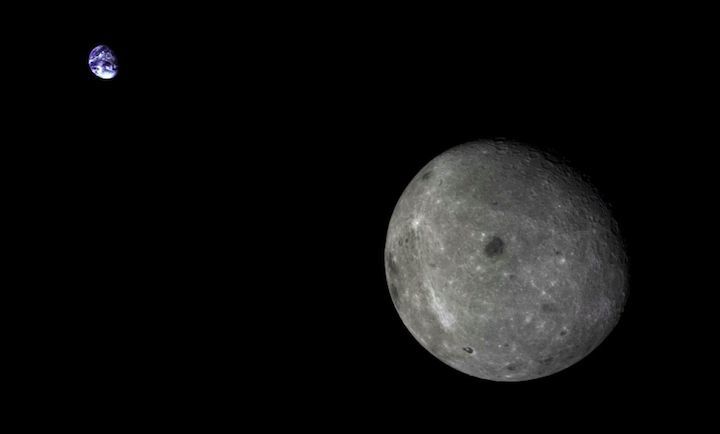The far side of the Moon and the distant Earth, imaged by the Chang'e-5T1 mission in 2014.
-
China's Chang'e-5 lunar sample return mission, due in 2019, will face similar reentry challenges, with a test 'skip' reentry for the mission performed in 2014.
The Chinese new generation crewed spacecraft will also used a skip reentry rather than ballistic reentry, to reduce the forces experienced by astronauts aboard. NASA's Apollo missions and Soviet Union's Zond craft also used skip or boost-glide trajectories.
A scale version of the reentry capsule was flown in June 2016, as a test payload for the debut of the Long March 7 rocket. The mission tested the aerodynamics of the craft and various key technologies, and was recovered in Inner Mongolia after 19 hours of orbital flight.
Early designs of the spacecraft depict a two-module system, with a habitable crew module and a rear service module. Notably, the reentry capsule eschews the bell-shape of the Shenzhou reentry capsule, instead having a flat top and sloped sides.

The next generation crewed spacecraft reentry capsule ahead of launch in June 2016.
June 2019 test flight
The next test flight for the new crewed spacecraft has now been confirmedfor June 2019, when the Long March 5B, a launch vehicle designed to loft space station modules into low Earth orbit, has its test launch.
It is unknown what version or scale of the craft will be flown, or how it will be recovered.
The reentry modules will be designed to be able to be recovered from the sea, as with Apollo capsules, relevant training for which China's astronauts - along with Europeans Sam Cristoforetti and Matthias Maurer - trained for last August.

ESA astronaut Sam Cristoforetti with Chinese counterparts Chen Dong and Liu Wang in sea survival training in August.
-
Human lunar mission concept
CAST is a subordinate to the China Aerospace Science and Technology Corporation (CASC), the country's main space contractor. Another body under CASC, the China Academy of Launch Vehicle Technology (CALT), is working on the early stages of developing the Long March 9, a super-heavy lift rocket similar in capabilities to the Saturn V which took NASA astronauts to the Moon.
At a global space conference in Beijing last June, a CALT official stated that the organisation is working on a human lunar mission concept involving the launch of Long March 9 followed by rendezvous and docking with CAST's next generation crewed spacecraft in low Earth orbit, launched by a Long March 5B, before performing a burn to take the combined craft towards the Moon.
Such a mission would first take place in the 2030s, following the first test flight of the Long March 9 around 2030.
Quelle: gbtimes


